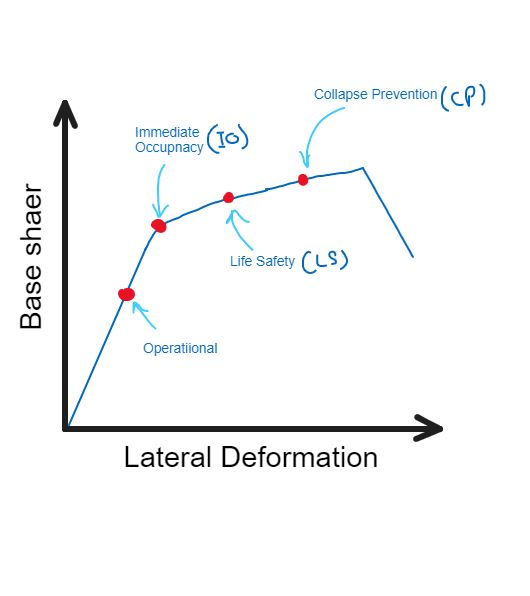In continuation of my previous post on performance-based design, I had discussed how it is adopted to monitor the displacement of critical points in the structure. (link in the first comment)
But what is the method to do performance or displacement-based design? There pushover analysis comes into play.
[1] Pushover analysis is a static method that identifying the critical locations (hinges) in the structure by applying incremental horizontal loads to the structure.
[2] The stress-strain or force-displacement relationship for all the structural members are already fed into the analytical model which cover both linear & non-linear zones.
[3] The idea is to find the most critical hinge and let it yield beyond the linear zone, once this happens the forces are redistributed to other structural elements. Then the horizontal loads are further increased to find next critical hinge and so on.
[4] The lateral deformations of the structure are plotted against the incremental forces until the structure gets significant global deformation and fails.
[5] The curve obtained is called Pushover curve and various performance stage (IO, LS & CP) can be obtained as per the permissible deformation criteria.
[6] Pushover analysis is used for ductility based seismic design of new buildings also it is quite prevalent for retrofitting of existing buildings.
This is a small post on pushover analysis, any comments or suggestions are welcomed.

Comments are closed